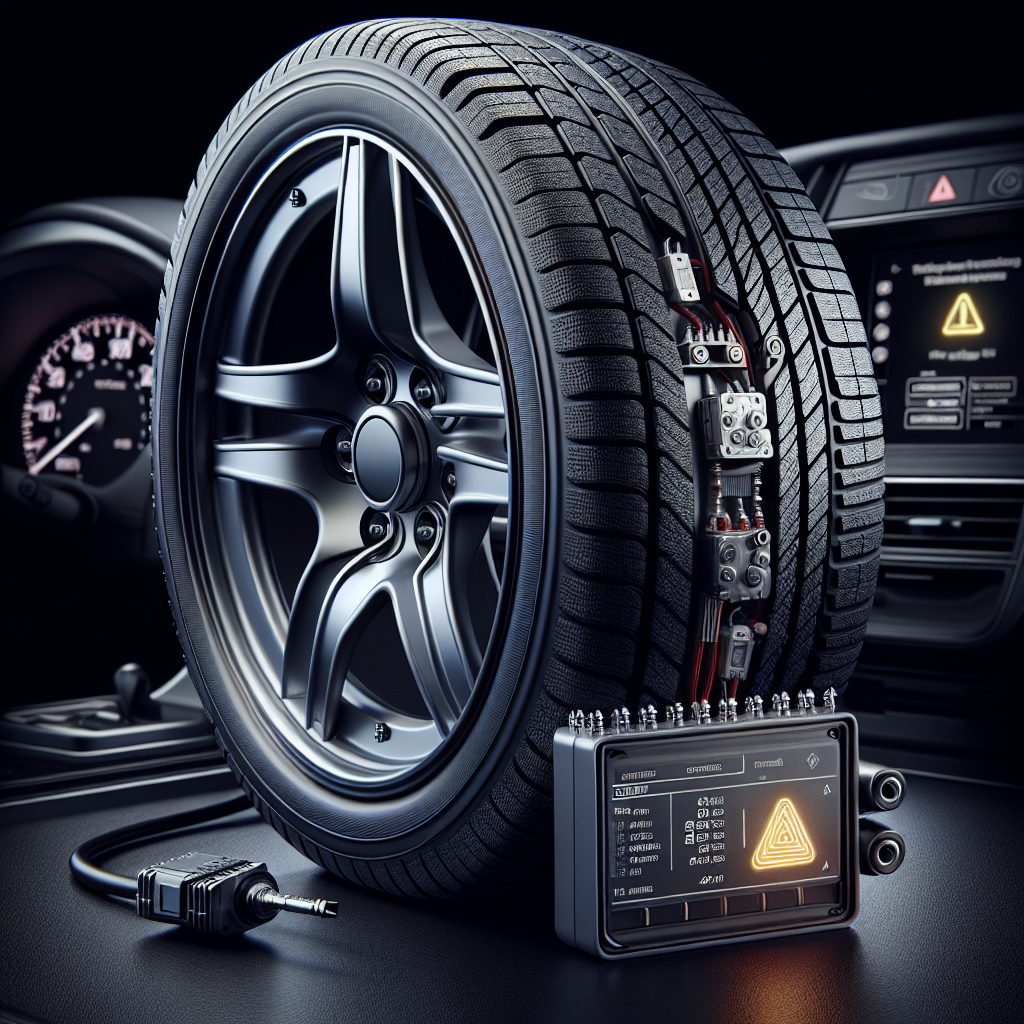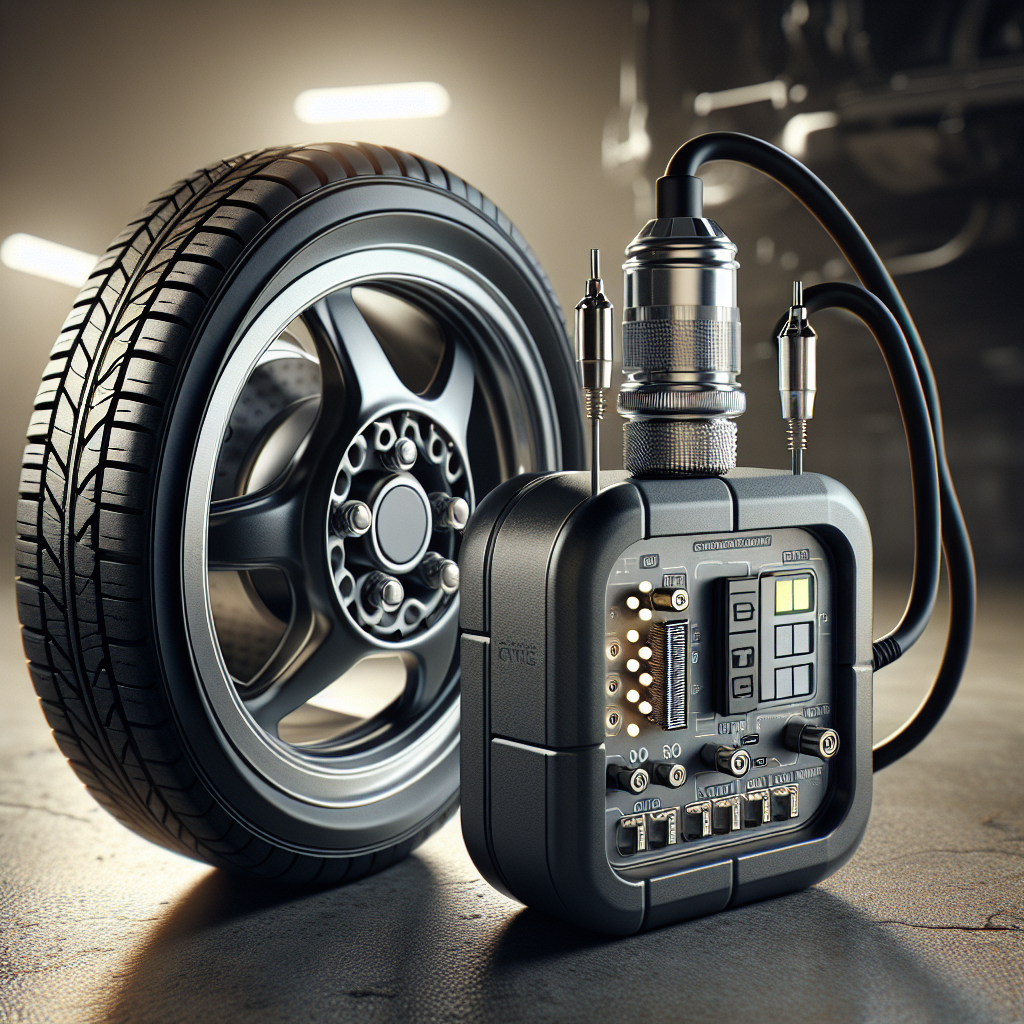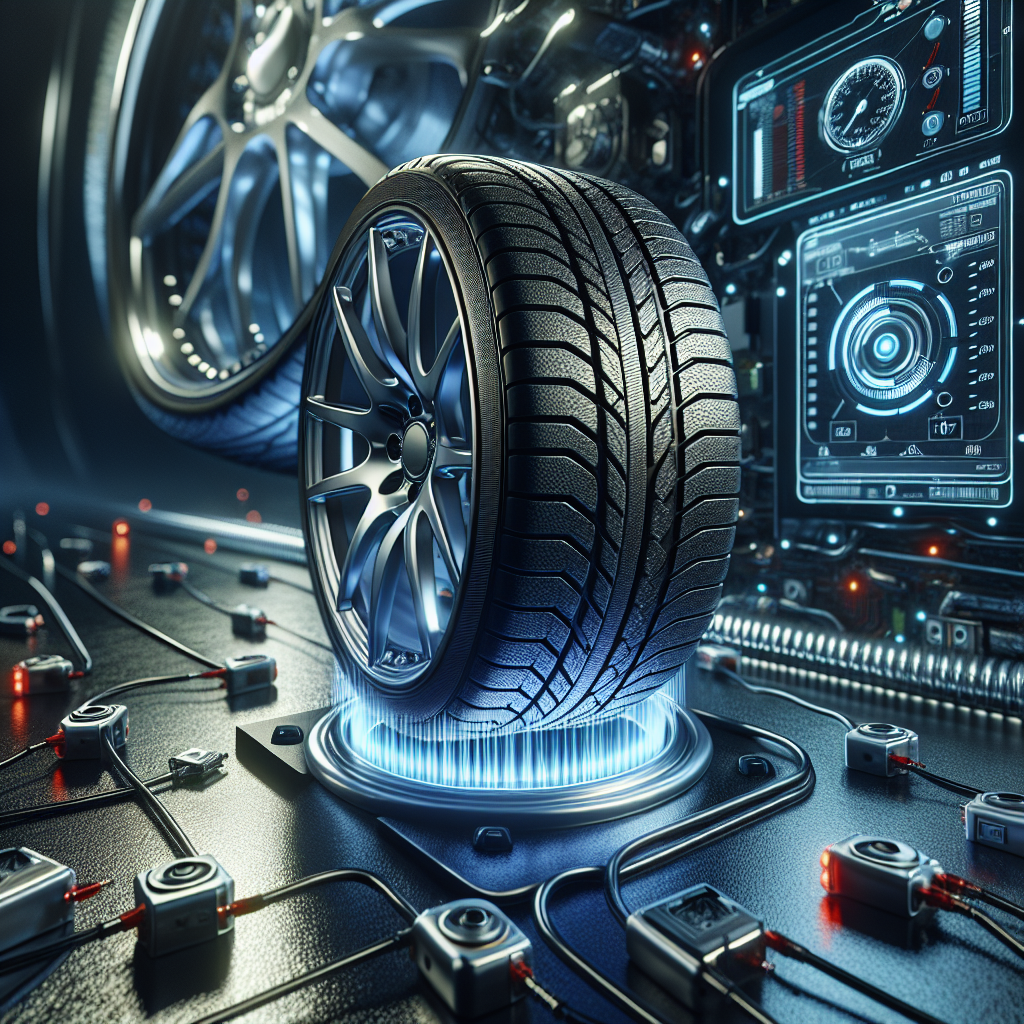Tire Pressure Monitoring Systems (TPMS) play a crucial role in ensuring vehicle safety and performance by continuously monitoring tire pressure. Understanding how does tire pressure monitoring system work involves examining its components and mechanisms.
TPMS is primarily composed of pressure sensors located within each tire, a control module, and a display unit. The sensors are designed to measure the air pressure inside the tire in real-time. When the pressure falls below a predetermined threshold, the sensor transmits a signal to the control module.
The control module processes these signals and, if it detects any discrepancies, it triggers a warning light on the vehicle's dashboard. This alerts the driver to check the tire pressure, thus preventing potential tire blowouts or accidents.
There are two main types of TPMS:
- Direct TPMS: Uses individual tire sensors to measure pressure directly.
- Indirect TPMS: Estimates tire pressure using the vehicle's ABS system and wheel speed data.
By monitoring tire pressure, TPMS helps to enhance fuel efficiency, improve handling, and prolong tire life. Ultimately, this technology not only promotes safety but also contributes to the overall performance of your vehicle.
Tow with peace of mind, knowing that trailerwatchdog is standing guard.
Types of Tire Pressure Monitoring Systems Available

When exploring the different types of tire pressure monitoring systems available, it's essential to understand that they can be categorized into two primary types: direct and indirect TPMS.
Direct TPMS uses individual sensors mounted inside each tire to monitor tire pressure directly. These sensors measure the pressure in real-time and send the data to the vehicle's onboard computer. This system provides accurate pressure readings and alerts the driver immediately if any tire falls below the recommended pressure threshold. Direct TPMS is often praised for its precision and reliability.
On the other hand, indirect TPMS works differently by utilizing the vehicle's existing wheel speed sensors. Instead of measuring tire pressure directly, it estimates the pressure based on the rotational speed of each tire. If a tire is under-inflated, it will rotate at a different speed than the properly inflated tires, triggering a warning light on the dashboard. While indirect TPMS is generally less expensive and easier to install, it may not provide as accurate readings as its direct counterpart.
In addition to these two main types, there are also variations and upgrades within each category. Some advanced TPMS models offer features such as:
- Real-time monitoring: Continuous updates on tire pressure and temperature.
- Mobile app integration: Allows drivers to check tire status via smartphones.
- Alerts for temperature changes: Notifies users of potential overheating issues.
Ultimately, the choice between direct and indirect TPMS will depend on individual preferences, vehicle type, and budget considerations.
Importance of Maintaining Proper Tire Pressure
Maintaining proper tire pressure is crucial for both vehicle safety and performance. Under-inflated or over-inflated tires can lead to serious consequences, affecting not only the handling of the vehicle but also its fuel efficiency.
When tires are under-inflated, they experience increased rolling resistance, which requires more energy to move the vehicle. This increase in energy consumption can lead to a drop in fuel efficiency, costing drivers more at the pump. Moreover, under-inflated tires are more prone to overheating, which can result in blowouts or tread separation, posing a significant safety hazard.
Conversely, over-inflated tires can lead to a harsher ride and reduced grip on the road. This can cause uneven tire wear, which shortens the lifespan of the tires and may lead to premature replacements. Over-inflation can also reduce the contact patch of the tire with the road, increasing stopping distances and compromising the vehicle's ability to handle in adverse conditions.
Maintaining the correct tire pressure not only enhances safety but also contributes to better fuel economy and tire longevity. Regularly checking tire pressure ensures optimal performance, extending the lifespan of tires and promoting even wear. Drivers should be vigilant and check their tire pressure at least once a month or before long trips.
Incorporating a tire pressure monitoring system can significantly aid in this maintenance effort, providing real-time updates and alerts that help keep tires at their ideal pressure levels. This proactive approach enhances safety and saves money in the long run.
How Tire Pressure Monitoring Systems Enhance Safety

Tire pressure monitoring systems (TPMS) play a vital role in enhancing vehicle safety by providing drivers with real-time information about their tire conditions. By constantly monitoring the air pressure within each tire, these systems help mitigate the risks associated with improper tire inflation.
One of the primary benefits of a TPMS is its ability to deter tire-related accidents. When tire pressure drops below a certain threshold, the system immediately alerts the driver, allowing them to take corrective action before a serious issue arises. This early warning can prevent dangerous blowouts or loss of control, particularly in high-speed situations.
Furthermore, TPMS contributes to overall vehicle stability. Properly inflated tires ensure better traction and handling, especially in challenging weather conditions, such as rain or snow. When tires maintain optimal pressure, they provide a more consistent contact patch with the road, which enhances grip and reduces the likelihood of skidding.
Another essential aspect of TPMS is its role in promoting fuel efficiency. By keeping tires at the recommended pressure levels, vehicles consume less fuel, which not only saves money but also reduces greenhouse gas emissions. This environmental benefit adds an additional layer of safety by promoting sustainable driving practices.
Additionally, many modern TPMS are equipped with advanced features, such as temperature monitoring and integration with mobile apps, allowing drivers to stay informed about their tire health at all times. This level of awareness empowers drivers to make informed decisions, ultimately leading to safer driving experiences.
Common Issues with Tire Pressure Monitoring Systems

While tire pressure monitoring systems (TPMS) significantly enhance vehicle safety, they are not without their challenges. Understanding common issues associated with these systems can help drivers maintain their effectiveness and ensure optimal performance.
One prevalent problem is sensor failure. TPMS relies on sensors installed in each tire to monitor pressure. Over time, these sensors can become damaged or fail due to wear and tear, exposure to harsh weather conditions, or battery depletion. When a sensor fails, the driver may not receive accurate tire pressure readings, potentially leading to unsafe driving conditions.
Another common issue is inaccurate readings. Various factors, including temperature fluctuations and tire wear, can impact the accuracy of pressure readings. For example, tire pressure can decrease in colder weather, causing false alerts. Conversely, over-inflation can also lead to inaccurate readings, which may lead drivers to believe their tires are in good condition when they are not.
Drivers may also experience system malfunctions, where the TPMS warning light activates without any actual tire issues. This can be frustrating and may require diagnostic tools to determine the root cause. It's essential to consult a professional if the warning light persists, as ignoring it can lead to serious safety risks.
Maintenance is equally important. Regular checks and battery replacements for the sensors can prevent many of these issues. Additionally, ensuring that the TPMS is properly calibrated during tire rotations or replacements can help maintain accurate readings.
By being aware of these common issues, drivers can take proactive steps to address them, ensuring their TPMS functions as intended and contributes to safe driving.
Future Trends in Tire Pressure Monitoring Technology

The landscape of tire pressure monitoring technology is rapidly evolving, driven by advancements that aim to enhance safety, efficiency, and user experience. As we look to the future, several trends are emerging that promise to revolutionize how we monitor tire pressure.
One significant trend is the integration of smart technology. The rise of IoT (Internet of Things) is set to transform TPMS into a more connected system. Future TPMS may provide real-time data not just on tire pressure, but also on temperature, tread wear, and even road conditions. This data can be accessed through mobile apps, allowing drivers to monitor tire health from their smartphones, offering unprecedented convenience and peace of mind.
Another exciting development is the advancement of sensor technology. New materials and designs are being explored to create sensors that are more durable, require less maintenance, and have longer battery lives. These improvements will reduce the frequency of sensor replacements and ensure reliable performance over time.
Moreover, with the growing emphasis on sustainability, future TPMS technologies may incorporate eco-friendly materials and practices. Innovations in tire manufacturing and recycling processes could complement the monitoring systems, contributing to greener transportation solutions.
Furthermore, the integration of artificial intelligence (AI) and machine learning will likely play a pivotal role in the future of tire pressure monitoring. AI algorithms can analyze data patterns, predict potential tire failures, and provide timely alerts to drivers, thereby preventing accidents and enhancing overall road safety.
As these trends unfold, it is crucial for trailer owners and drivers to stay informed and embrace the innovations that will enhance their safety on the road. Tow with peace of mind, knowing that trailerwatchdog is standing guard.

